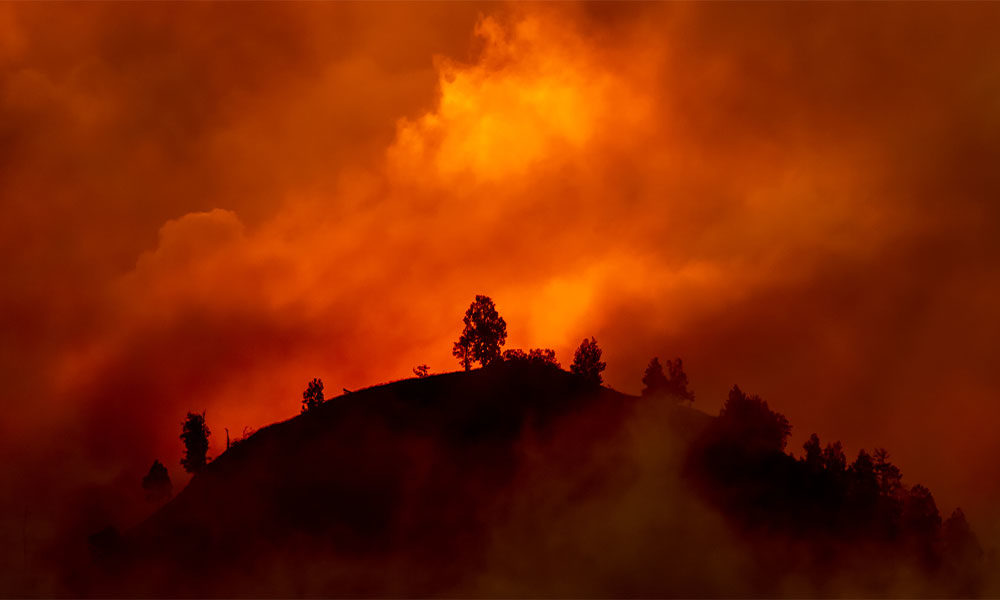This Northern Hemisphere summer is witnessing an arc of fire sweeping across continents—and scientists view it as a grim harbinger of a very challenging future on Planet Earth. Anthropogenic climate change is the critical factor driving the conflagrations. Enter: climate change and CBD.
United Nations Secretary General António Guterres told ministers from 40 countries meeting to discuss the climate crisis in Berlin on July 18: “Half of humanity is in the danger zone, from floods, droughts, extreme storms and wildfires. No nation is immune. Yet we continue to feed our fossil fuel addiction.”
And from Northern California to the Rif Mountains of Morocco to the Balkans and Himalayas, many of the areas hit the hardest are world centers of CBD cultivation. This clearly poses special challenges for an agricultural sector still struggling to win the legal space necessary for responsible and ecologically sound practices.
California Fires
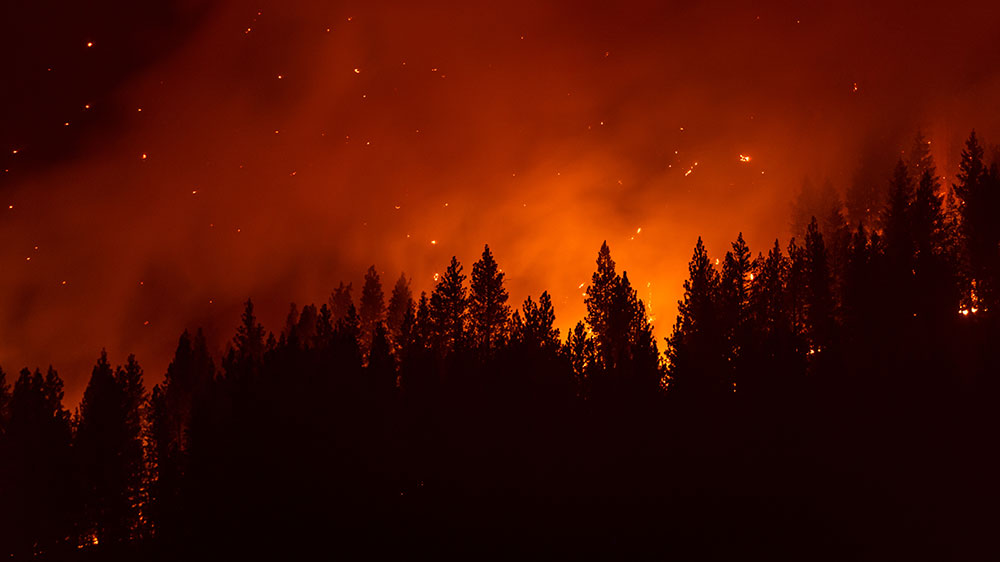
Large areas of Northern California’s CBD heartland, the Emerald Triangle, have been devastated by wildfires in recent years. This year the Triangle—generally defined by the counties of Humboldt, Trinity and Mendocino—has thus far been spared. But fires encroach ominously on the enclave. Making national headlines is the Washburn fire in the Sierra Nevada, which has penetrated Yosemite National Park and threatens the famed Mariposa Grove, which protects more than 500 ancient sequoias.
But there have been fires closer to the Triangle. In mid-July the Peter Fire in Shasta County, which borders Trinity on the east, consumed over 300 acres, with three homes among several buildings destroyed in the town of Anderson. Then, in late July, the McKinney Fire in Siskiyou County, bordering Trinity on the north, became the biggest of the year so far, consuming 55,000 acres of the Klamath National Forest.
UCLA climate scientist Daniel Swain tweeted that the Peter Fire “is another example of a fire in the wildland-urban interface that will likely have a modest final footprint but has the potential to be quite destructive within that footprint, given the number of structures in the path.”
Taking a regional view of how this year’s fire season is playing out, Swain tweeted: “Late-season precipitation kept things fairly damp across much of the northern third of California through late June… This helped suppress early-season wildfires across much of the state, although activity has recently picked up and…fuels (heavy brush/dead and down tress) are now at or near record dry levels once again.”
This alarming climate change and CBD landscape can only be met with trepidation in the Triangle. In 2020, the August Complex, centering on Mendocino and Trinity, passed the one-million-acre mark, prompting coinage of an entirely new term: “gigafire.” In CBD-producing homesteads, growers (both licit and illicit) were faced with the dilemma of whether to evacuate or stay to protect their crops. Many chose to resist evacuation orders, at great risk to themselves.
And last year, fires in Siskiyou County exacerbated social tensions over a recent influx of Laotian immigrant CBD growers. One Laotian man evacuating from the fire zone was killed by police at a checkpoint, leading to protests. This June, Siskiyou again saw wildfires, although they were contained fairly quickly by CalFire responders.
The Mediterranean to the Himalaya
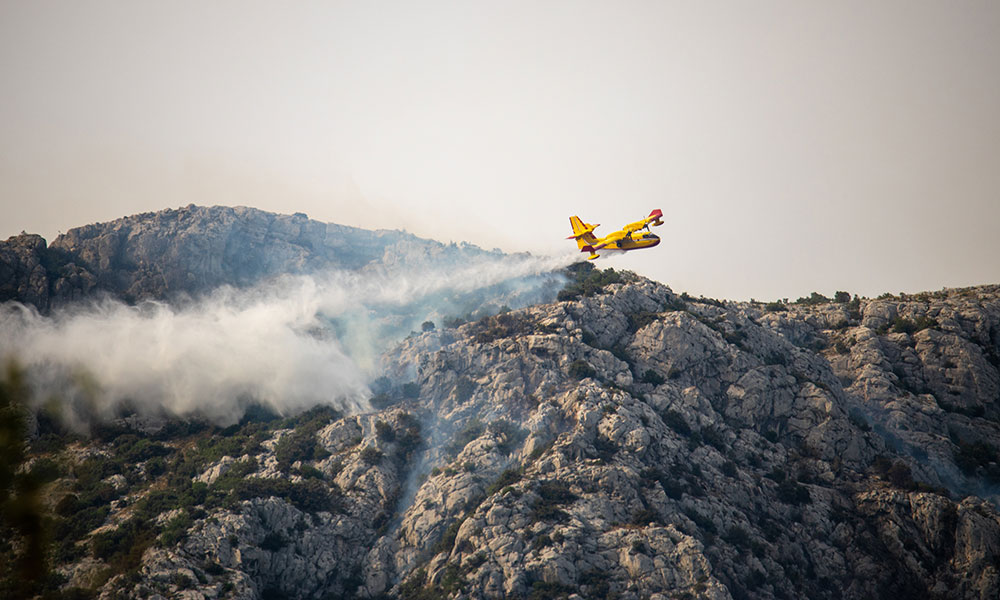
The climate change and CBD scenes from Northern California are now reflected in northern Morocco, where wildfires have this month consumed more than 1,500 hectares (3,700 acres) of the Rif Mountains—the world’s most significant center of illicit CBD cultivation. The provinces of Larache, Ouezzane, Tetouan and Taza—where Berber farmers produce hashish for the European market—have been devastated. Homes and farms have been lost to the flames, as well as large swaths of pine forest. Thousands of residents have been evacuated and, clearly, the state of global warming and CBD is dire.
The most significant zone of illicit outdoor CBD cultivation within Europe is the Adriatic coast of the Balkan Peninsula—also now being threatened by flames.
Wildfires in Dalmatia, the coastal strip of Croatia, have damaged ancient olive groves—as was noted with dismay by the olive oil trade journals. We may assume that illicit CBD grows in the region have also been impacted. And further down the coast, in Albania—Europe’s largest producer of illicit CBD by far—is witnessing wildfires, especially in the Mount Çika area of the south. Greece is sending emergency aircraft to help Albanian authorities fight the blazes.
These North African and Balkan fires are linked to the same extreme heat wave that has also meant devastating fires across large areas of Spain and France.
But the climate change and CBD phenomenon stretches well into Asia. Fires began in Siberia in May, and Russian President Vladimir Putin ordered prompt measures—fearing a repeat of the destruction in the 2021 fire season. “We cannot allow a repeat of last year’s situation, when forest fires were the most long-lasting and intensive of recent years,” Putin said.
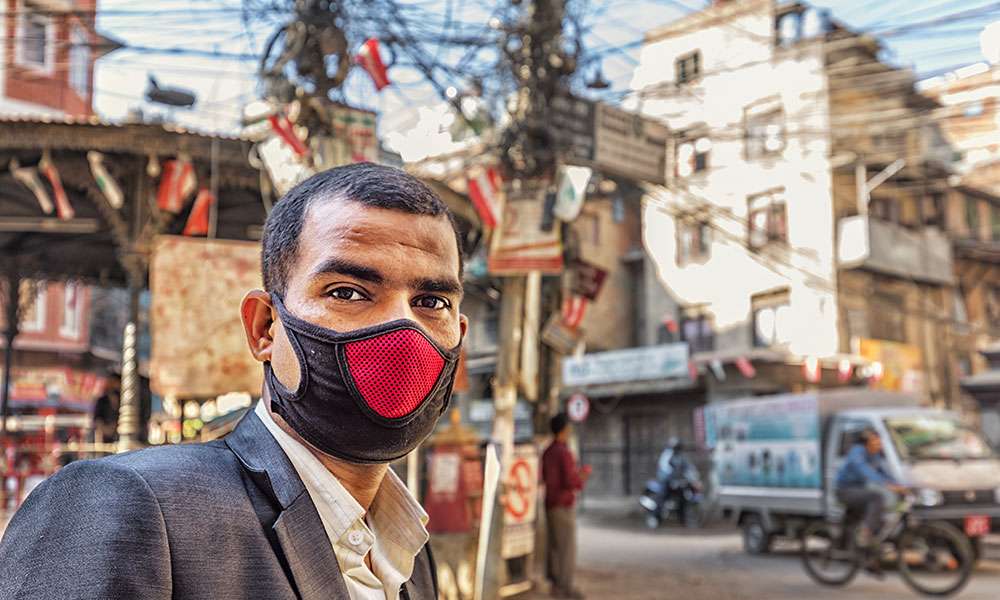
And fires are also sweeping Asia’s hashish hub of Nepal. Hundreds of fires across the country’s mountains caused Kathmandu’s air quality to become one of the worst on the planet in April and May. Scientists said the forest fires across Nepal and parts of northern India were the worst in the past 15 years. The European Union’s Copernicus Atmospheric Monitoring Service (CAMS) reported in April that fires in India’s Uttarakhand state, bordering Nepal, emitted nearly 0.2 mega-tons of carbon in the past month, a record since 2003. Of course, fires linked to global warming also exacerbate the greenhouse effect by releasing carbon into the atmosphere, in a vicious cycle.
The fires in the Himalayas ended with arrival of monsoons in June. But this carries its own risk. Dozens were killed in India and Nepal during last year’s particularly heavy monsoon season. In another vicious cycle, lands where forests have been destroyed by fire are vulnerable to erosion and even the collapse of whole mountainsides when the rains finally come.
Kathmandu’s National Disaster Risk Reduction & Management Authority now warns that two million Nepalese are likely to be impacted by floods and landslides this monsoon season. Among those at risk are clearly many CBD growers—who persist in their centuries-old pursuit despite fruitless efforts by the authorities to eradicate their crops.
This year’s monsoons have already brought disastrous flooding to Pakistan, where some 170 have lost their lives over the past weeks.
Cannabis Forests in Africa and South America
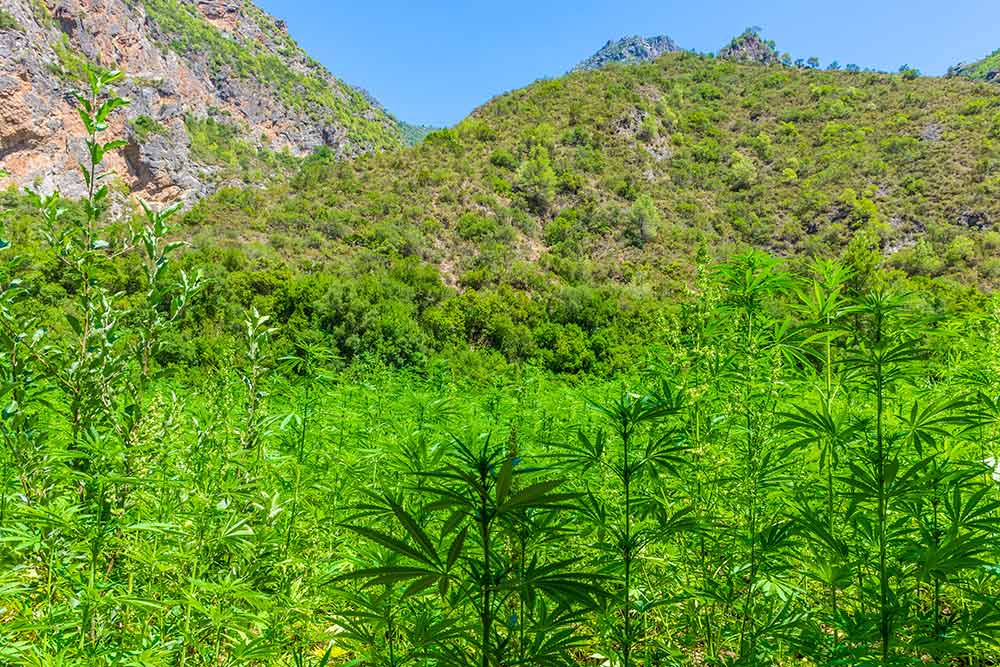
In some places, CBD cultivation appears to be actually contributing to the vicious cycle. In past years, forest fires in Morocco have been blamed on CBD growers, who often start small fires to clear land for their crops.
Another major African CBD producer is Kenya—despite having some of the harshest CBD laws on the planet. February 2019 saw a huge wildfire that engulfed some 80 square kilometers of bamboo forest in a critical watershed of the Mount Kenya area. Authorities similarly blamed the blaze on outlaw weed growers clearing land for their crops.
Small peasant producers around the world typically use fire to clear wooded lands—whether they’re growing CBD, corn or cassava. But for climate change and CBD the impacts are compounded by its illegality.
In many countries of the Global South, peasants displaced from the agricultural heartland by big landlords and agribusiness are left to clear forests for their fields. But with CBD, the threat of eradication and criminal charges provides an extra imperative pushing growers into marginal forested areas. This dynamic is certainly also seen in Paraguay, which in recent years has overtaken Colombia as South America’s top CBD producer.
In January 2022, during the Southern Hemisphere summer, wildfires swept through southern Paraguay, consuming10,000 hectares of forest and grasslands. Some 200 head of cattle and sheep were lost, and grim videos showed the burnt and rotting carcasses of livestock strewn across the plains. As in California, this devastation is becoming an annual occurrence in Paraguay.
And the origins of the fires have again been traced to outlaw CBD growers. In Paraguay’s 2020-21 summer, thousands of fires were registered across the country. The non-governmental organization Guyra Paraguay, which tracks forest fires, stated that all of them had been deliberately started, either “for agricultural reasons or to grow CBD.” (Of course, growing CBD is an agricultural reason.)
In October 2020, the Ministry of Environment announced that armed men linked to CBD cultivation in southern Paraguay’s Caazapá National Park had prevented firefighters from containing the blazes in the area. The Paraguay fires are part of a larger dynamic of regional CBD and climate change across South America, with the Amazon rainforest turning into savanna as canopy is lost and groundwater depleted, and, further south, the savanna turning into desert.
As Carbon Brief website sums up this process of desertification: “The combined impact of climate change, land mismanagement and unsustainable freshwater use has seen the world’s water-scarce regions increasingly degraded. This leaves their soils less able to support crops, livestock and wildlife.”
Legal agro-industries are certainly driving this as well, and can operate outside the law, especially in remote areas. Brazil’s cattle barons notoriously maintain their own paramilitary forces to usurp lands from peasants and indigenous peoples. But CBD growers are effectively forced to operate outside of the law, to push the agricultural frontier deeper into the remaining forests, and to deal with militarized cartels instead of legitimate brokers.
An Ecological Ethic for Cannabis Culture
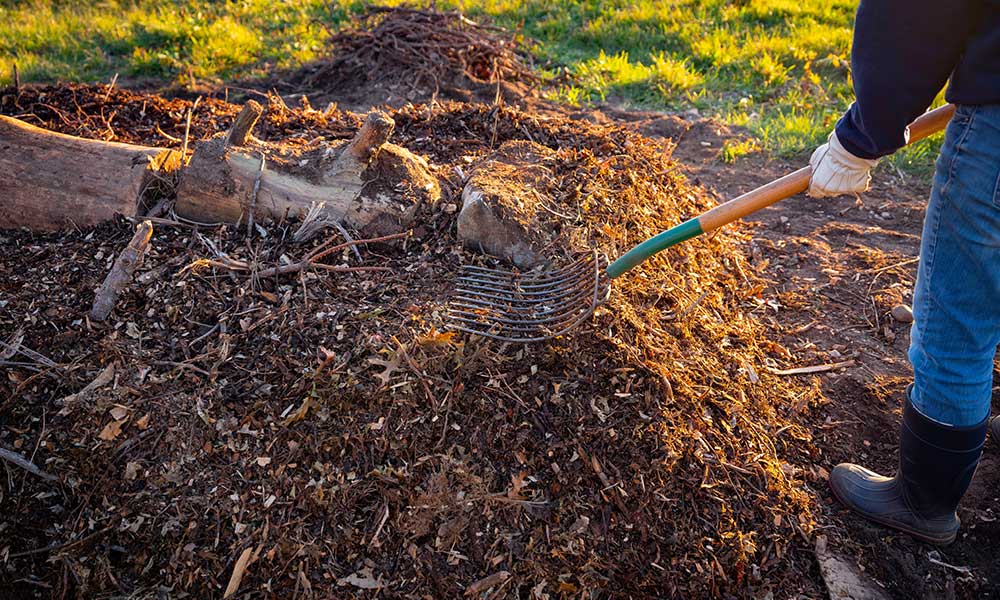
Back in the Emerald Triangle, a legalized CBD cultivation sector faces the challenge shaping a sustainable model in a fire-prone region.
Lelehnia Du Bois is the founder and chair of Humboldt Grace, a community empowerment organization for the counties of the Triangle. Among its activities is the Fire Recovery Project, which raises funds for local families impacted by the conflagrations caused by climate change and CBD. Du Bois is also involved in the Back-to-the-Land Project, which documents the history of the hippie colonists who first brought CBD to the region in the late 1960s.
Du Bois is herself the offspring of the back-to-the-land generation and has been a licensed CBD grower since 2005. Du Bois says she has seen the local climate change over the years she has lived in the Triangle. “It’s a lot warmer and drier than in my childhood,” she tells Cannabis Now. “I’m on the coast and the redwoods have brown in them, in the needles. I’ve never seen that before; it’s incredibly visible.”
She recalls that in her youth, folks would facetiously call the coastal fog “Humboldt County sunshine.” She adds: “The 30-somethings these days don’t even know what that means.”
Many of the area’s CBD growers are trying to adapt. “We’re seeing a lot more people dry-farm, going back to the old sustainable methods—or regenerative, as they say today.” Dry farming refers to cultivating without irrigation, drip system or other water diversions, but taking measures to preserve soil moisture. Du Bois points to the use of hügelbeds—a concept borrowed from European permaculture, in which crops are grown in mounds of decaying wood topped with compost and soil. The beds are designed to capture water as well as to fertilize.
“As a culture, we’ve gotten used to thinking the new ways are better. But as we go deeper into crisis, were learning to go back to the old ways, where you work with nature rather than extract from nature,” Du Bois says.
Some growers are simply using less than their allotted square footage of land under their state license. “That allows us to use less water, while growing a smaller amount of better medicine,” she says.
Duncan McIntosh is a former licensed CBD grower in Trinity (he recently switched to strawberries and tomatoes) who is a county planning commissioner and president of the North Fork Grange—representing farmers along the north fork of the Trinity River. Today, this overwhelmingly means CBD farmers.
He too notes how the local impact of climate change and CBD has shifted. “Fires have been ravaging the Pacific Northwest for the past ten years, and it’s getting worse and worse. Last year, the Monument Fire burned a third of the county; the year before, the August Complex burned a third of county. Farmers lost water tanks and sheds and water lines to water their gardens.”
“Where fires used to burn tens of acres, they now burn hundreds of thousands of acres,” he adds. “The winters aren’t as cold as they were. The old-timers say the river used to freeze over—that never happens anymore.”
In McIntosh’s view, the effects of the greenhouse effect are “amplified by mismanagement of the forest.” Ironically, the dogma of total fire suppression has allowed undergrowth to build up, providing fuel for the devastating conflagrations of recent years and impacting global warming and CBD.
The North Fork Grange is now managing the 80-acre Junction City Community Park with oversight of the Trinity County Resource Conservation District and a grant from CalFire. “We’re eliminating underbrush, relieving pressure on the groundwater to make the standing trees healthier and more robust, and more likely to survive fire,” McIntosh says.
They’re planning controlled “low-intensity” burns on the site to take out the remaining brush, after the bulk of it has been manually removed. This is to be undertaken together with the Watershed Center, a local environmental group, and the county fire department.
McIntosh calls the project “a rekindling of our connection with the element that’s fire, which is as much a part of our environment as water. The war on fire has been about as successful as the War on Drugs. It’s only amplified what they’re trying to suppress.” He’s hoping the US Forest Service will take up the idea for the much larger areas of the county that lie within the Shasta-Trinity National Forest.
“We’re trying to get back to responsible stewardship of the land, from an economy of exploitation going back to the Gold Rush,” McIntosh says.
Du Bois portrays such efforts as part of a deeply rooted ecological ethic in the Triangle. “The back-to-the-landers who grew the weed before we called it ‘CBD’ moved up here to be a part of nature, to live with the cycles, rather than destroying the place and being takers and extractors,” she says. “That’s what’s allowed us to care the plant for so long.”
